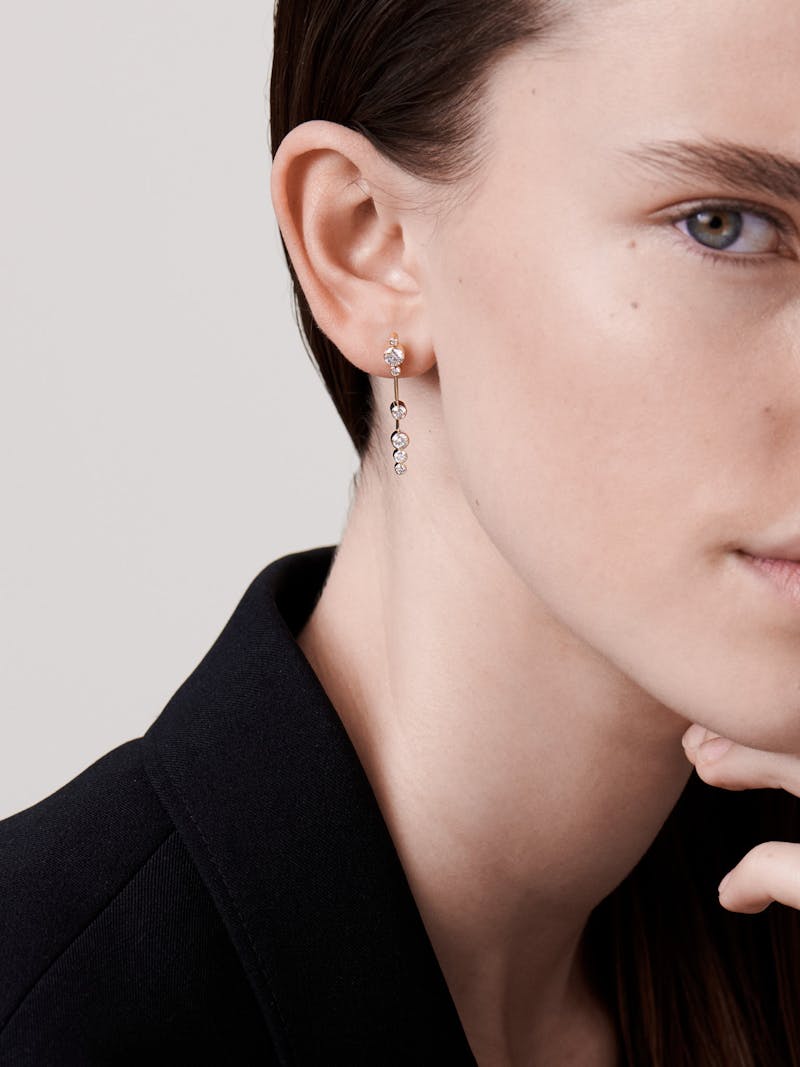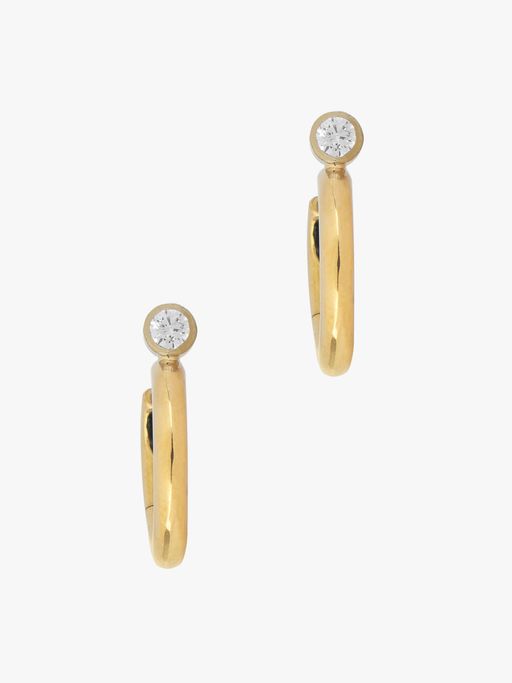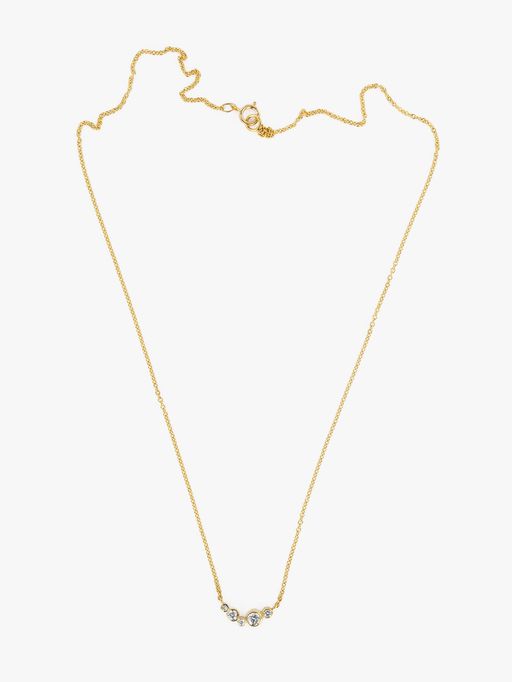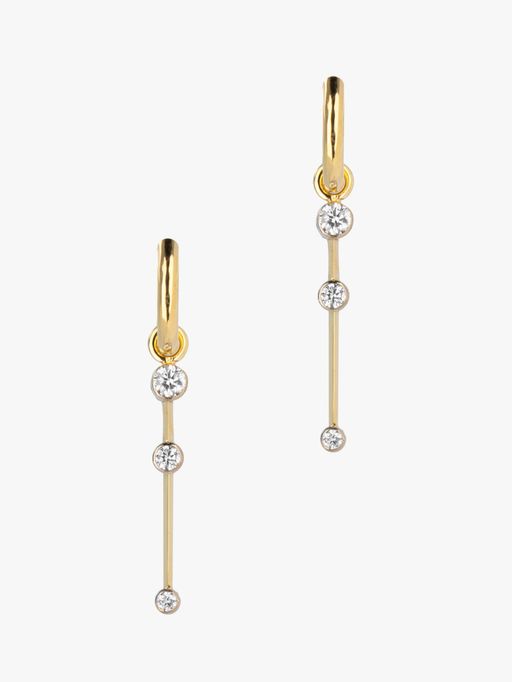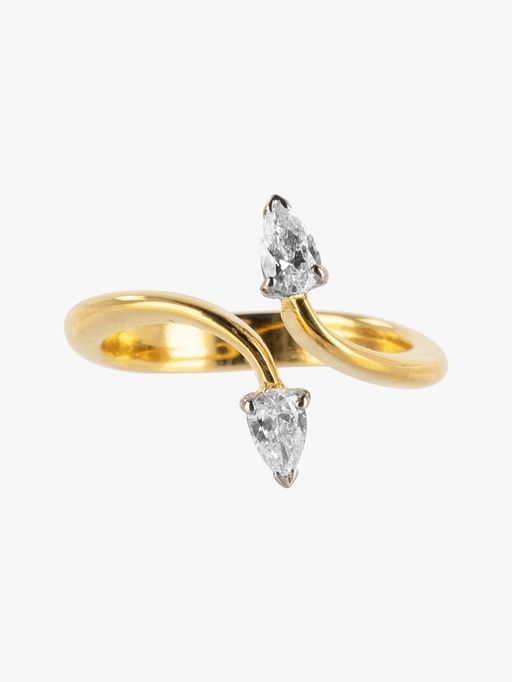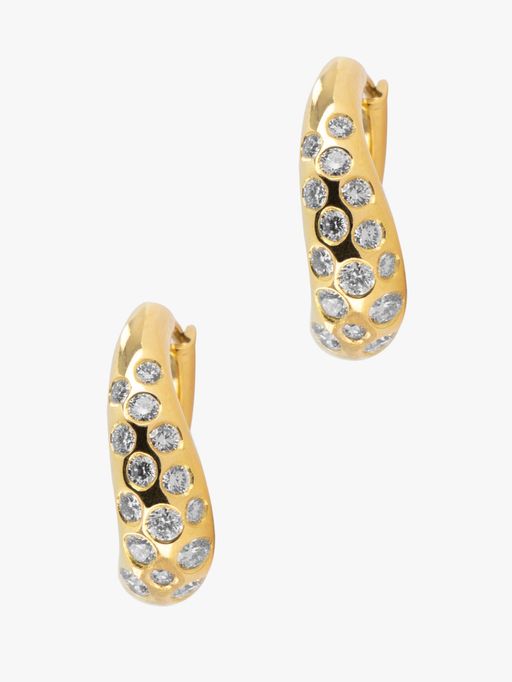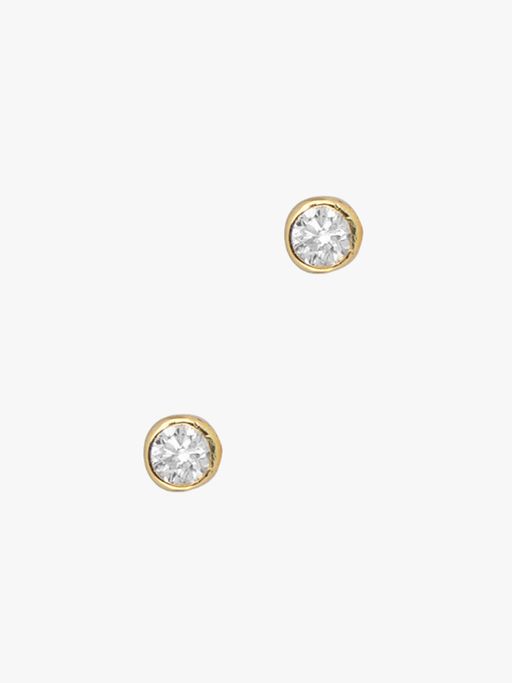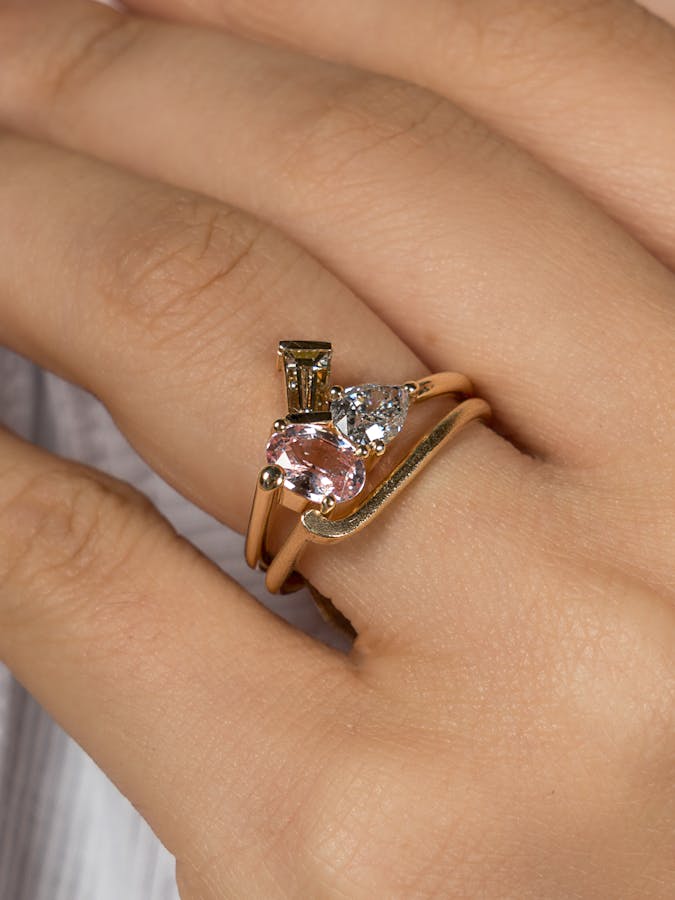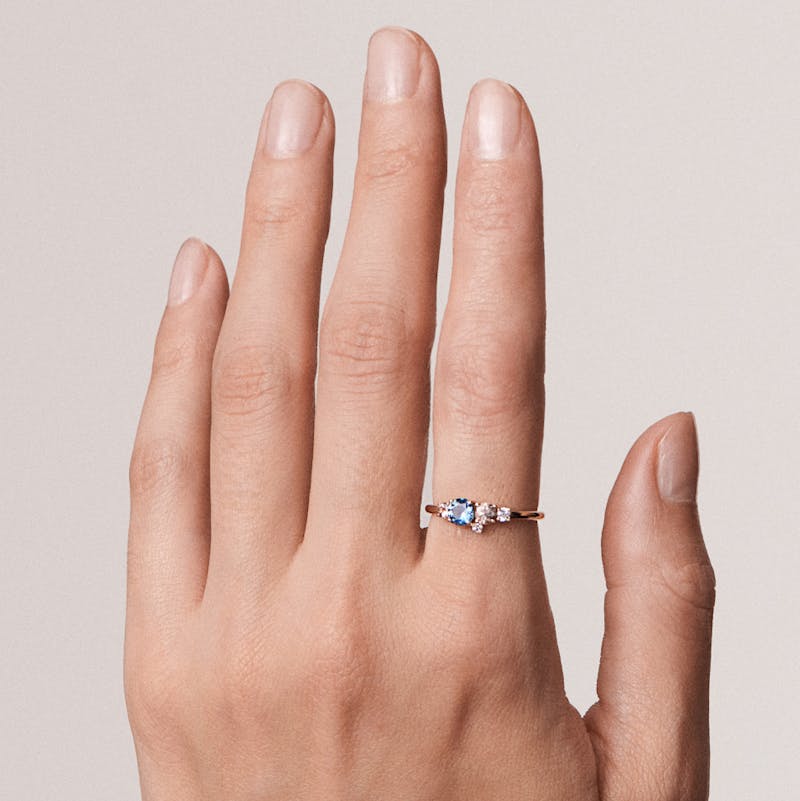Jessie Thomas
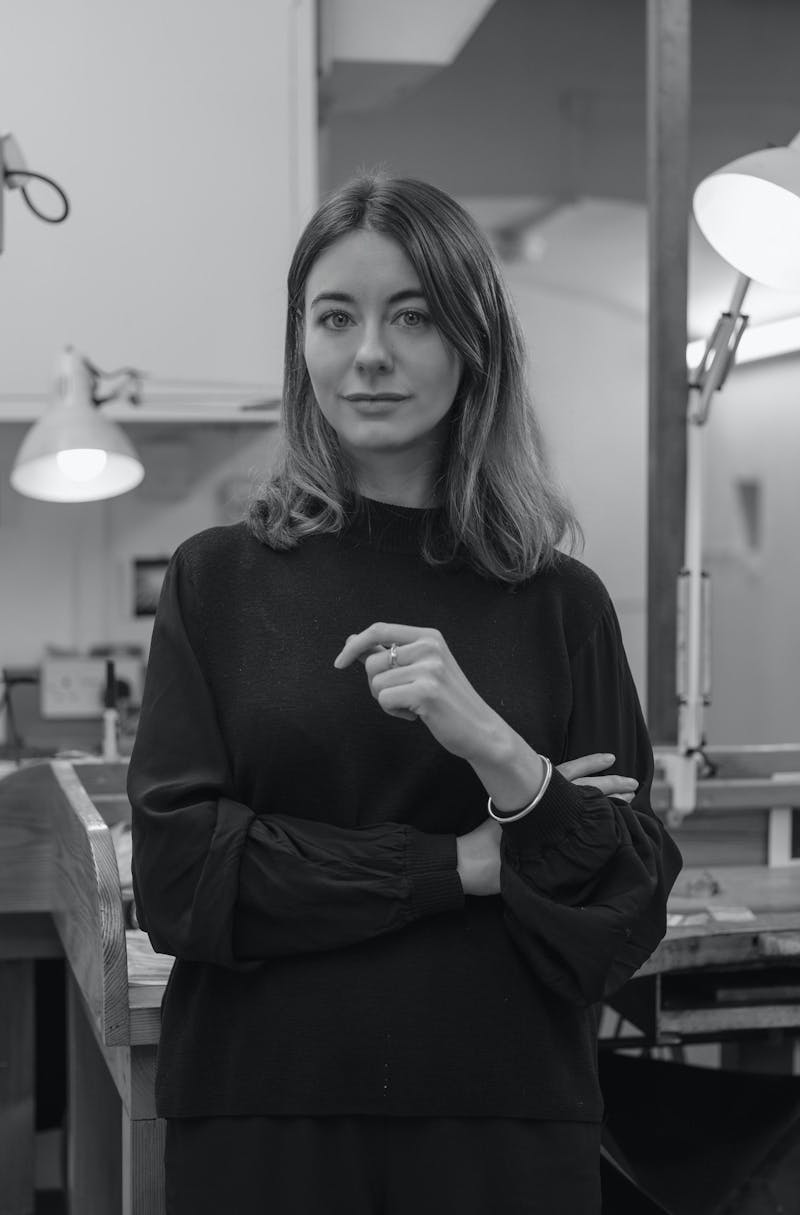
Technical skill and sentimental value come together in Jessie Thomas's simple yet incredibly special creations
London-based Jessie Thomas learned her craft from her father, master goldsmith David Thomas, who she still works alongside in the workshop that she practically grew up in. A high level of craftsmanship, complicated technicality and wearability is
key in creating the incredible pieces that transcends trends, exhibiting instead an aesthetics of something beautiful yet simple. Everything is handcrafted by the Thomases and often evolves organically during their creation.
You learned your craft from your father, master goldsmith David Thomas, how was it growing up with and learning from him?
He actually lives above the workshop, so I literally grew up above the workshop. It was very much a part of my childhood. Then, I actually didn’t train in jewellery originally, because I did history of art. I worked for a couple of years in art, and then I ended up coming here and training under him. I think I’ve been here for nine years now. I did my whole apprenticeship and now I am what you call a journeyman goldsmith, whereas he is a master goldsmith, because he has obviously had apprentices.
This takes me to my next question, so you haven’t always known that you wanted to be a goldsmith? Or was it always in the background?
It is such a big part of our lives that it has always been that. But I didn’t necessarily think it was what I wanted to do, but once I started, I became obsessed. Because it is a craft, and learning a craft just takes loads of time and practice. It’s quite fascinating as a craft, I think. It is one of the most interesting ones, and it is one of the most technical ones. Once, I started, I was hooked.
Do you still work alongside your father?
Yes, but we’ve got separate workshops, and that level of separation is really nice. But we still work together, and he helps me. Every time I make something new, if it is a new technique, then he helps me, and we trade ideas. He has obviously literally made everything under the sun, and he has a great aesthetic and we’ve got a really similar design style.
Maybe we can talk a bit more about craftsmanship, because I believe that is one of the essential parts about your jewellery, and the very technical aspects of the craft?
It’s about wearability. How to make a pair of earrings that are not too heavy to wear and make everything so that it is comfortable. I think that blends in with the technical side because it is about more than just design. Because it can look good, but it has to also feel nice to wear and not be too heavy, and the diamond has to be close to the finger so it is not catching onto anything, and you can wear it every day. I think that is massively influenced by my father, and I think that’s very much the technical side. And using techniques that mean that the pieces are simple but still special.
That covers my next question about your aesthetics, which from my impression are simplicity, wearability, but with something surprising?
Sure.
I read your inspiration sources, which are quite varied. Maybe you can talk a bit about where you find your inspiration?
A lot of it, I suppose, comes from him and then a lot from the 1920s and 1930s French and Italian designers. That’s a big thing. I am not someone who finds inspiration in nature or anything like that. A lot of inspiration comes from developing a new technique or when I learn how to mount a diamond in a certain way. Then I tend to build a lot of pieces out of that, which is a big thing for me.
"A lot of inspiration comes from developing a new technique or when I learn how to mount a diamond in a certain way."
It is more the jewellery and the craft itself rather than outside sources?
I think so. It has always been more about the technique and working with the metal and then pieces come out of that. And just every day. I think it is like always trying to make pieces that are wearable and simple but still quite interesting.
Taking inspiration from traditions in jewellery and making it your own?
Exactly. And, for instance, I mainly set in white gold, which I never used to do. I used to set a lot in yellow. I still use yellow gold in the main piece, but I like to actually set the diamond in white. It shows them off and I like the way it looks. So, pieces come out of that sort of thing.
That makes sense! I read somewhere that you said when you work with custom or unique stones, it is like a tiny house set around the house.
That is true. I think it is like architecture on a tiny scale. It is the same. You do technical drawings in the same way. It is often building out from the stone and getting the design that way.
I guess, because I am Danish, I am interested in the connection to Georg Jensen. Your father used to work with him, right?
He trained there, under Henning Koppel. Was there for a while.
And what you took from him was the shape and the movement?
Totally, I think what we always say that he got is form. It is all about form and trying to keep form in the pieces. That’s the biggest thing that has carried through. It is always form, thinking about the form. And there’s a lot of curving shapes and it is all kind of smooth but simple. It is interesting but simple. Danish aesthetic.
Something that’s also important to cover is your ethical and sustainable practices?
Everything is pretty much recycled gold. I work only in 18 karat gold and a bit in platinum, but mainly 18 karat yellow and white gold, and it is pretty much all recycled. I work with only one stone dealer, who I’ve always worked with. He came through my dad and it is all sort of top colour and very ethical stones, diamonds mainly, from Botswana. Everything over a half karat does have a certificate but the smaller stones don’t, but he’s got a very trustworthy sourcing, so it is all very ethical, which is nice.
Why is that important to you?
I think, unfortunately, diamonds specifically, but also gold in terms of mining practices, these things have always been an issue for the industry. The origin of most diamonds is super problematic. Literally, in the last 10 years, I would say, the whole supply chain has become much clearer. For instance, all of my gold dealers use recycled gold now without me even having to ask. Whereas 10 years ago when I started, you had to pay extra for recycled materials, and you had to ask for everything, and no one would tell you where anything came from and it all felt very ethically ambiguous, and really difficult. Because you want to make jewellery, but you want to find materials that are not damaging the world or being sourced in very awful manners. Therefore, it was very nice when it became much easier to work with dealers and buy gold that was ethical and sustainable. It took a massive weight of my shoulders in terms of having to try and source that stuff. As an industry, it does not always have great practices, but it is nice that things are changing.
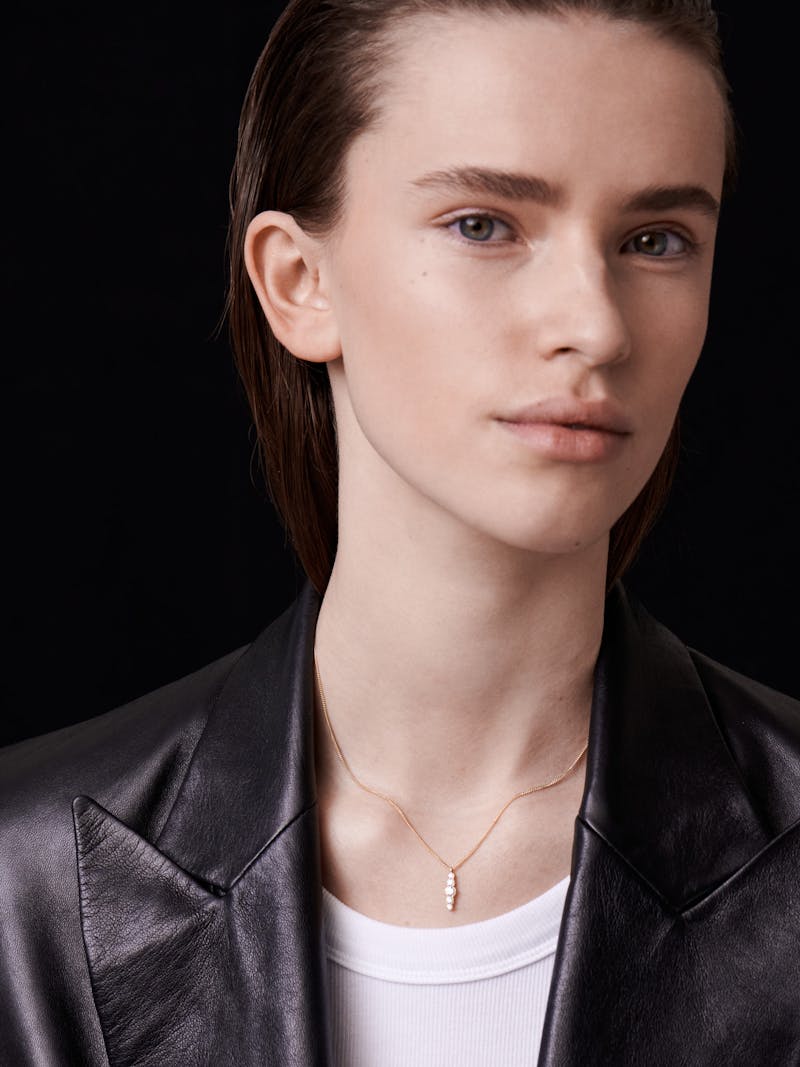
I guess people have needed to push for it, and you still need to push for it, to change things. But it is nice to hear that things actually have changed over the last 10 years, because then hopefully, we can push it even further.
Exactly, and make everything really ethical. And also, I don’t use lab grown diamonds, but I have actually just signed up with someone who is selling them, so I might have a look at some of those, because I am quite interested in that as an idea. But then it is this whole idea about what makes a diamond special is that it’s been grown in the earth for millions of years and it is so unique. To actually manufacture it takes away from that.
What would you say the role of jewellery is today? Has it changed or has it always been the same? What’s your perception?
It is definitely more every day, people aren’t just buying huge pieces for special occasions, they are buying pieces that they can wear all the time. A lot of my clients are women who buy for themselves, which feeds into it being more of an everyday piece because they will invest in something that they can just have, and it leads back into pieces being simple and classic. Because people are looking to invest in something that they aren’t going to wear out over time.
I guess it has changed a bit then with women buying more for themselves.
It means that there’s a slight element of fashion involved. Maybe more so than when it is bought as a gift, because I think people are safer when they are buying gifts. They go for more straight-forward simple pieces, whereas women buying for themselves are willing to buy something slightly more interesting, while also keeping it wearable.
One last thing, what is your own favourite piece of jewellery, do you have one?
I do, and I actually do sell a version of it. It is a chunky everyday ring with a diamond in it, and I’ve got one and I made one for my mum. It is from my granny’s engagement ring that we got when she died, so I split up the stones and then made us all the same ring. It is sentimental but it is one of my best-selling pieces, like a heavy everyday diamond ring.
I guess that’s essentially what jewellery is all about, personal memories? To keep the memories of something special or someone special.
Exactly, sentimentality.
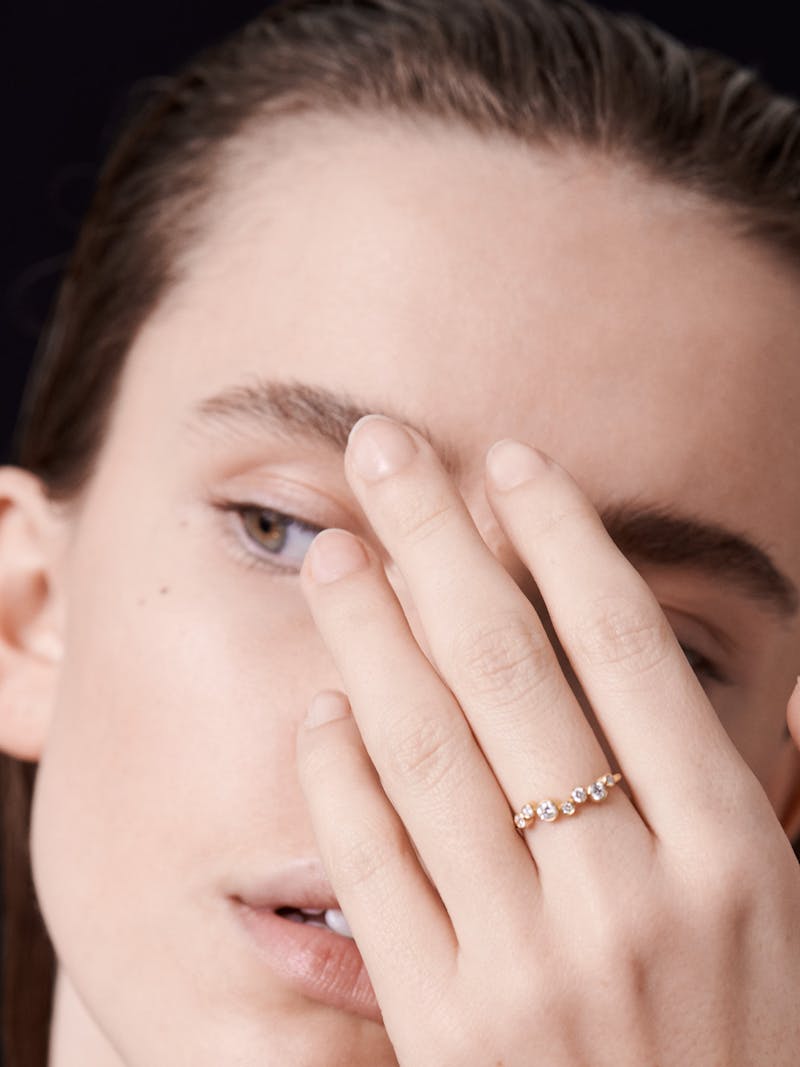
.jpg?ixlib=gatsbyFP&auto=compress%2Cformat&fit=max&w=800&h=1067)
